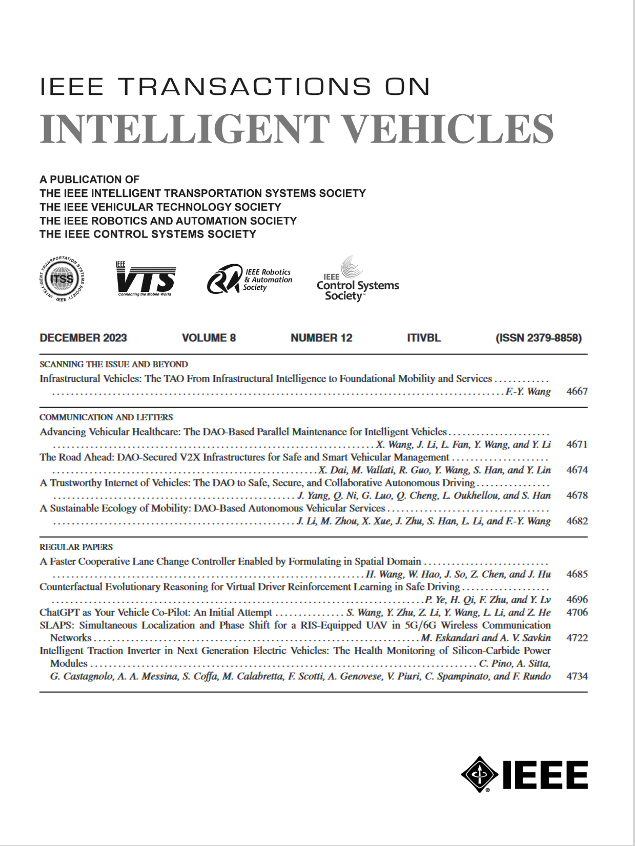基于切换编队策略的quav分布式协调控制
IF 14.3
1区 工程技术
Q1 COMPUTER SCIENCE, ARTIFICIAL INTELLIGENCE
引用次数: 0
摘要
针对具有高度不确定环境的复杂任务,研究了具有未知外部干扰的四旋翼无人机分布式协调控制问题。为了提高系统的安全性和灵活性,提出了一种包含指令触发和情景触发两种模式的切换编队策略。此外,SFS可以根据任务要求或环境变化获得满意的队形。在此基础上,采用基于径向基函数神经网络的扩展状态观测器,设计了基于SFS生成的时变编队的分布式协调反步控制器。所提出的控制器通过混合量化器进行量化,然后发送给执行器。此外,多重Lyapunov函数方法保证了跟踪性能。最后,在无人机上进行了飞行实验,验证了所提控制方法的有效性。本文章由计算机程序翻译,如有差异,请以英文原文为准。
Distributed Coordinated Control for QUAVs With Switching Formation Strategy
In this paper, the distributed coordinated control problem is studied for quadrotor unmanned aerial vehicles (QUAVs) with unknown external disturbances in a complex mission with highly uncertain environment. To improve the safety and flexibility of the system, a switching formation strategy (SFS) is proposed, which contains the instruction-triggered and the situation-triggered modes. Furthermore, a satisfying formation can be obtained by the SFS according to mission requirements or environmental changes. On this basis, a distributed coordinated backstepping controller for QUAVs is designed with the time-varying formation generated by the SFS with the radial basis function neural network-based extended state observer. The proposed controller is quantized by a hybrid quantizer and then sent to the actuator. Moreover, the multiple Lyapunov function method guarantees the tracking performance. Finally, some flight experiments are implemented on the QUAVs to verify the effectiveness of the proposed control method.
求助全文
通过发布文献求助,成功后即可免费获取论文全文。
去求助
来源期刊

IEEE Transactions on Intelligent Vehicles
Mathematics-Control and Optimization
CiteScore
12.10
自引率
13.40%
发文量
177
期刊介绍:
The IEEE Transactions on Intelligent Vehicles (T-IV) is a premier platform for publishing peer-reviewed articles that present innovative research concepts, application results, significant theoretical findings, and application case studies in the field of intelligent vehicles. With a particular emphasis on automated vehicles within roadway environments, T-IV aims to raise awareness of pressing research and application challenges.
Our focus is on providing critical information to the intelligent vehicle community, serving as a dissemination vehicle for IEEE ITS Society members and others interested in learning about the state-of-the-art developments and progress in research and applications related to intelligent vehicles. Join us in advancing knowledge and innovation in this dynamic field.
 求助内容:
求助内容: 应助结果提醒方式:
应助结果提醒方式:


